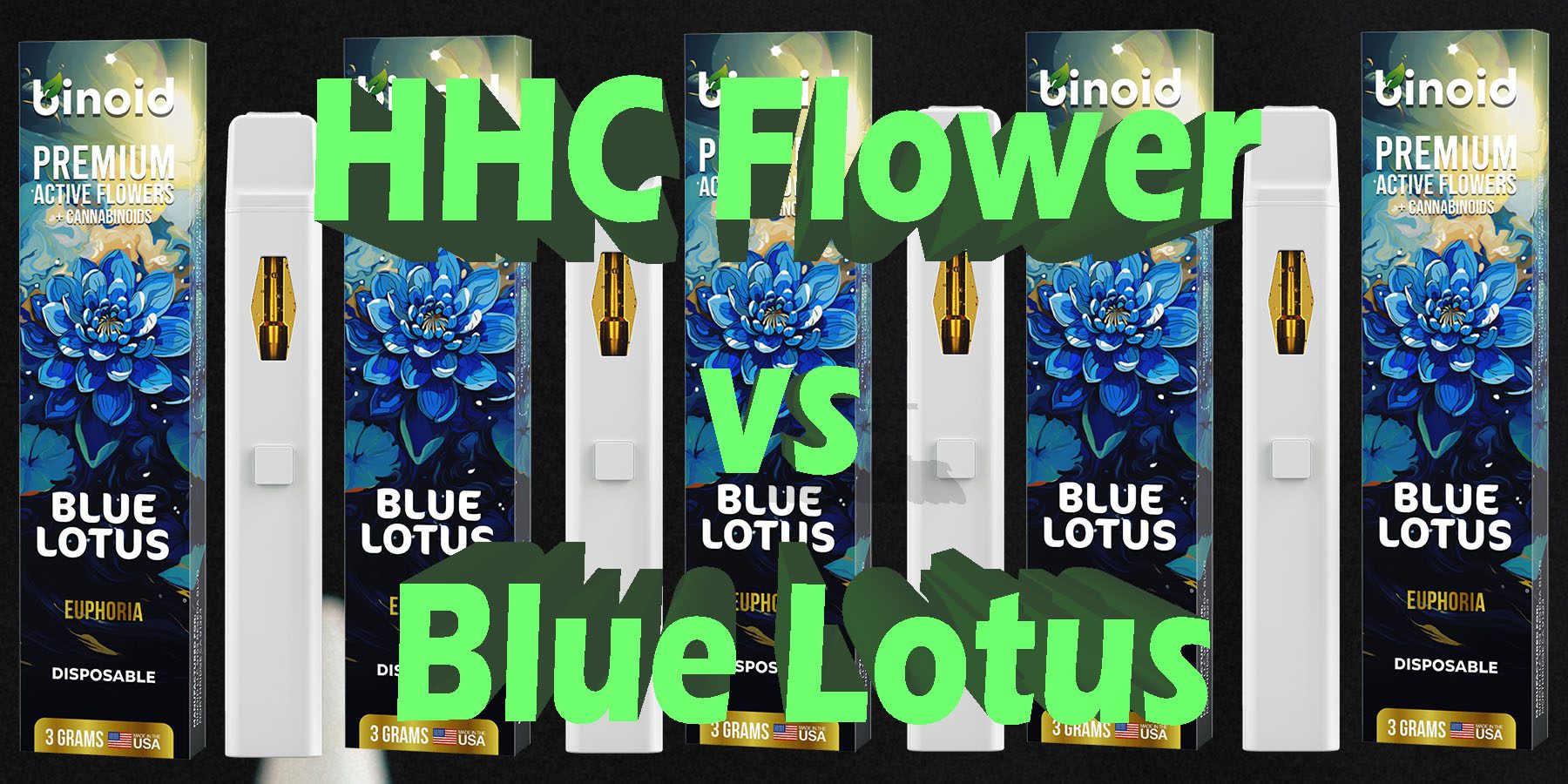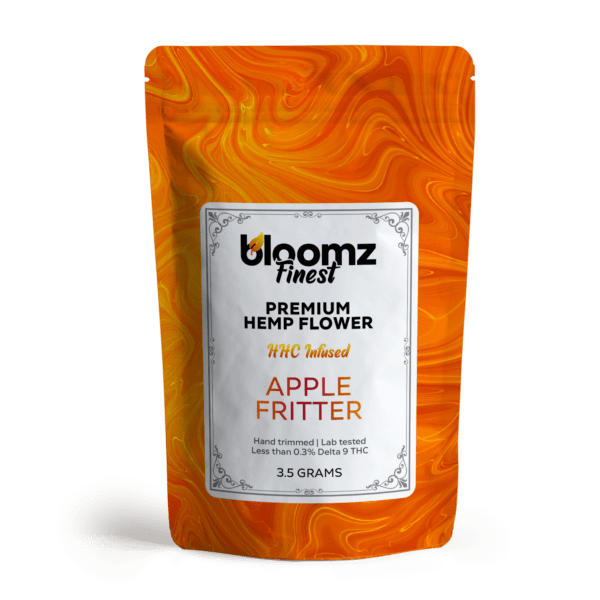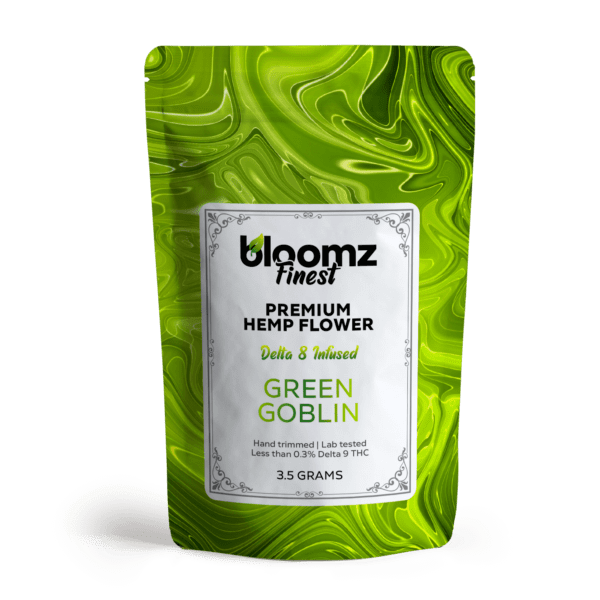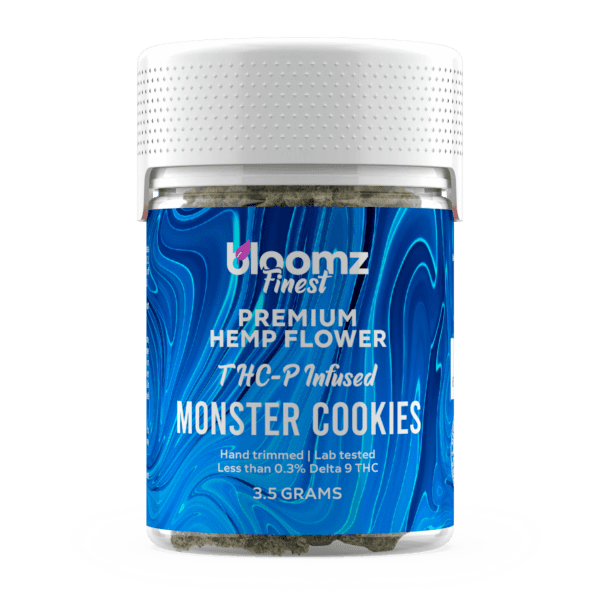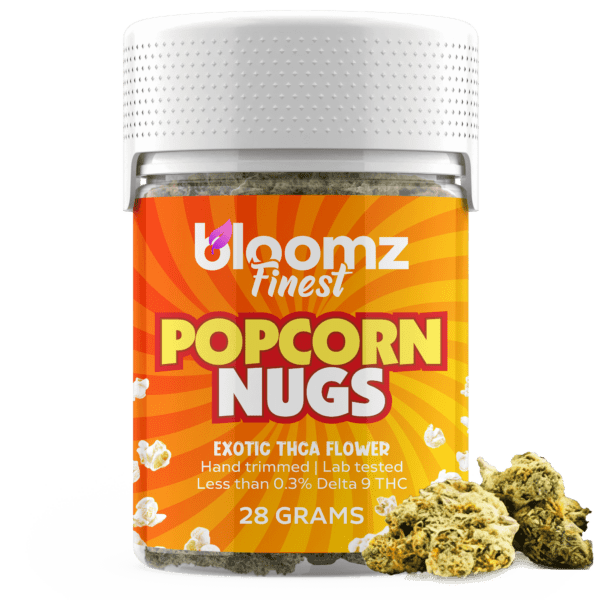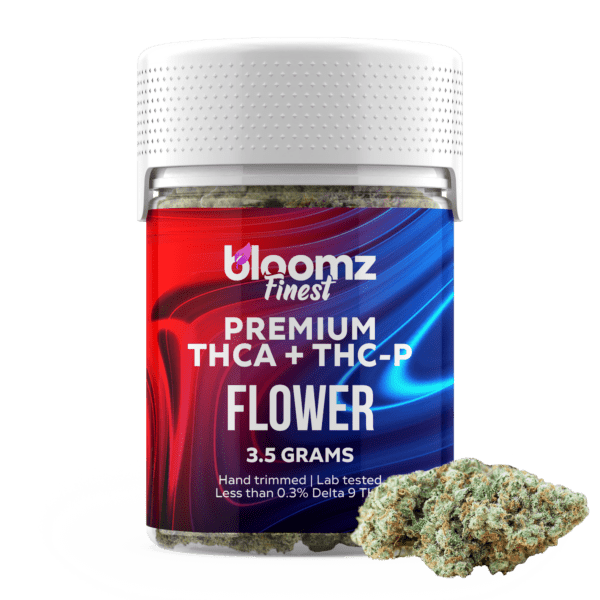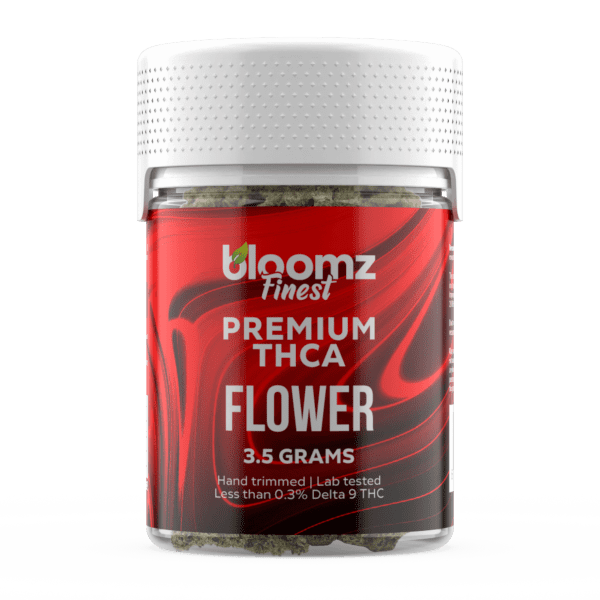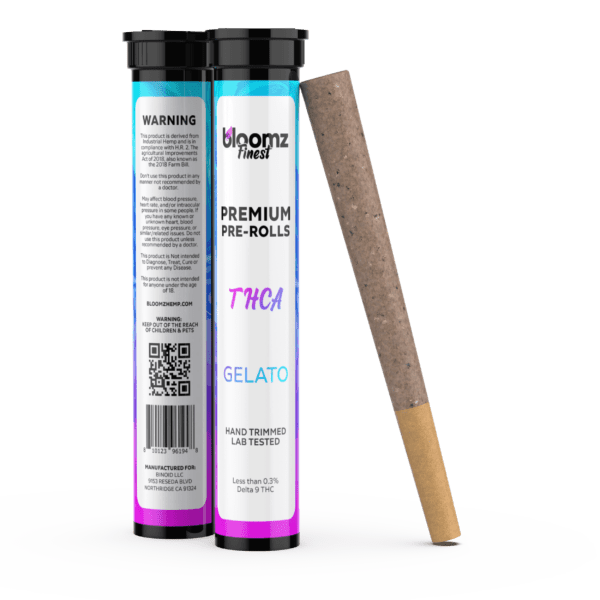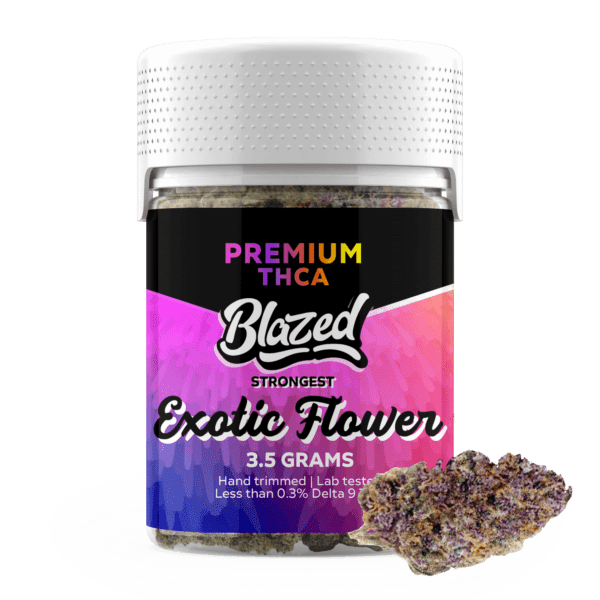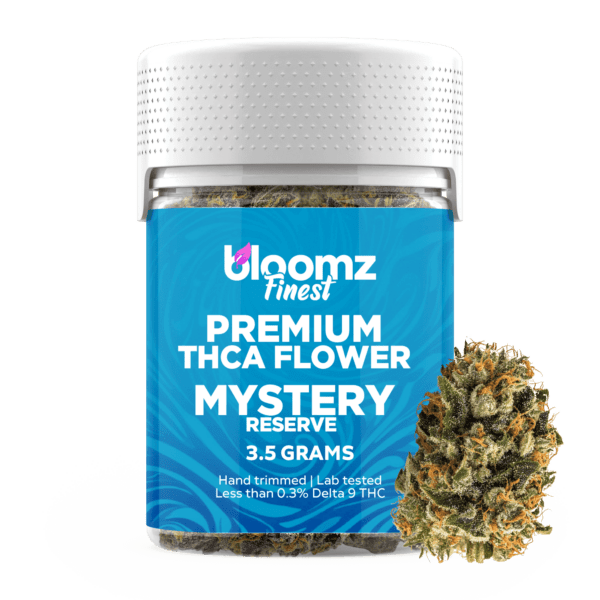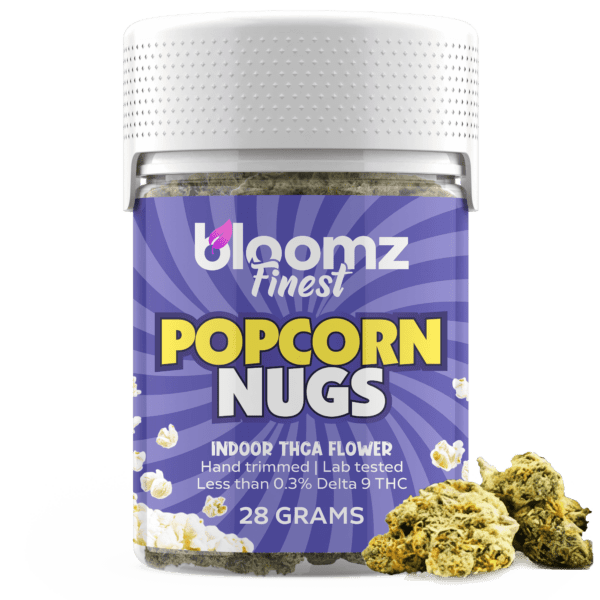In the grand emporium of natural and synthesized botanicals, a captivating choice emerges, pitting a marvel of modern chemical engineering against a sacred relic of the ancient world. On one hand, we have a cannabinoid meticulously crafted for stability and a reliably blissful experience, a molecule designed to echo the classic cannabis journey with remarkable fidelity. On the other, a timeless water lily whispers tales from millennia past, its power lying not in potent psychoactivity but in a gentle, spiritual calm that graced the courts of Egyptian pharaohs.
This is a fascinating duel between two different kinds of resilience: the engineered stability of a modern compound and the enduring historical legacy of a sacred flower. Navigating the path toward one or the other is to make a conscious decision about the nature of the experience you seek. It is a choice between a product perfected by science for consistency and a botanical perfected by history for a timeless and tranquil connection.
To Buy HHC Flower Click Here
Recommended products
Why It’s Important to Breakdown the Matchup of HHC Flower vs. Blue Lotus
In today’s ever-expanding and often confusing marketplace of wellness and recreational botanicals, a direct and detailed comparison between products is an invaluable tool for the consumer. The specific matchup between HHC flower and Blue Lotus is particularly important because it highlights a clear distinction between a scientifically modified cannabinoid and a purely natural, traditional flower. A thorough breakdown demystifies the origins, effects, and legal standing of each, allowing individuals to move beyond marketing claims and make choices rooted in genuine understanding.
This analysis is not about establishing a victor, but about illuminating two fundamentally different paths to altered states of consciousness, one rooted in a lab, the other in a riverbank. By providing this clarity, we empower users to align their choice with their personal philosophy, experience level, and desired outcome.
Here are the primary reasons why a detailed breakdown of this matchup is so crucial:
-
Understanding the Concept of Chemical Stability: A key differentiator in this comparison is the unique chemical nature of HHC. As a hydrogenated cannabinoid, it is structurally more stable and resistant to degradation from heat and UV light than classic THC. This has practical implications for shelf-life and potency retention. Blue Lotus, as a dried natural herb, is subject to the normal degradation of organic material over time. Breaking this down helps consumers understand a unique selling point of HHC and make purchasing decisions based on factors like long-term storage and product consistency.
-
Clarifying the “Natural” vs. “Infused” Distinction: This matchup provides a perfect case study in the difference between a natural botanical and a manufactured cannabinoid product. Blue Lotus is consumed in a form very close to how it grows in nature. HHC flower, however, is an infused product where a base of non-intoxicating hemp flower is coated with HHC distillate that was created in a lab. This distinction is critical for consumers who prioritize natural, whole-plant products and for understanding the importance of third-party lab testing to screen for residual chemicals from the hydrogenation and infusion processes.
-
Navigating a Nuanced Spectrum of Effects: While both can be used for relaxation, the experiences they provide are profoundly different. HHC is known for delivering a psychoactive experience that is very similar in character to traditional Delta 9 THC—a tangible, euphoric “high” with both cerebral and physical components. Blue Lotus offers a much subtler, non-intoxicating psychoactivity, guiding the user toward a state of serene, dreamy lucidity. A direct comparison prevents a user seeking a gentle meditative aid from being overwhelmed by HHC, and it keeps a recreational user seeking a potent high from being underwhelmed by Blue Lotus.
-
Addressing Complex Legal and Safety Questions: Both products exist in unique legal landscapes that require careful navigation. HHC’s legality is based on the 2018 Farm Bill but is challenged by its semi-synthetic nature, leading to a patchwork of state-level bans. Blue Lotus is federally legal (except in Louisiana) due to its historical status outside of drug control legislation. Furthermore, HHC’s safety profile is a subject of ongoing discussion, particularly regarding the ratio of its active and inactive isomers. A detailed breakdown ensures users are aware of the legal risks and the scientific unknowns associated with each choice.
-
Promoting Informed and Intentional Use: Ultimately, the purpose of this comparison is to foster a culture of responsible and intentional consumption. By providing a comprehensive overview of each product’s origins, effects, potency, and risks, we give individuals the tools to match the substance to the occasion. This level of knowledge allows a user to consciously choose the potent, recreational bliss of HHC for a social evening or the gentle, spiritual calm of Blue Lotus for a quiet session of meditation, ensuring a positive, safe, and beneficial experience every time.
Contender #1: HHC Flower
In the ever-innovative world of hemp-derived cannabinoids, HHC flower has emerged as a formidable and highly popular contender, celebrated for its unique stability and its remarkably familiar effects. HHC, or hexahydrocannabinol, is a close relative of THC, but with a crucial chemical modification that sets it apart. The result is a compound that delivers a dependably blissful and euphoric experience, often described as a perfect midpoint between the gentler Delta 8 THC and the more potent Delta 9 THC.
As a flower product, it is a triumph of modern infusion techniques, where premium hemp flower is imbued with the power of this resilient cannabinoid. HHC flower appeals to a wide audience, from curious newcomers to seasoned connoisseurs, all of whom are seeking a legal and accessible pathway to a classic cannabis-style journey, complete with the added benefit of a longer shelf life. It stands as a testament to the versatility of the hemp plant and the ingenuity of cannabinoid science.
Hexahydrocannabinol (HHC) is a semi-synthetic cannabinoid that is created through a process called hydrogenation. To understand this, it’s helpful to start with its natural counterpart, THC. HHC is essentially a hydrogenated form of THC. The process is chemically analogous to how liquid vegetable oil is converted into solid or semi-solid margarine. In a laboratory setting, a THC molecule has its double bond in the top ring structure broken and saturated with hydrogen atoms, typically in the presence of a metal catalyst like palladium or nickel. This seemingly simple addition of hydrogen makes the molecule significantly more stable.
It becomes less susceptible to oxidation and degradation from exposure to heat, air, and UV light, which is why HHC products are known for having a much longer and more stable shelf life than products made with THC. This chemical robustness is one of its primary advantages. It’s also important to note that the manufacturing process creates a mixture of two different HHC molecules: 9R HHC, which actively binds to the body’s endocannabinoid receptors, and 9S HHC, which, due to a slight difference in its molecular structure, does not bind as effectively and is considered largely inactive. The ratio of these two isomers in the final product directly impacts its overall potency.
With this crucial scientific context, it becomes clear that “HHC flower” isn’t a strain of cannabis that a farmer can cultivate to be naturally rich in HHC but instead, it’s a manufactured, composite, and infused product. The process begins with high-quality, legally grown hemp flower, which is naturally rich in CBD (cannabidiol) and contains less than 0.3% Delta 9 THC. This beautiful, terpene-rich flower provides the physical structure, the aromatic compounds that create the flavor and smell, and a host of other minor cannabinoids.
This foundational hemp flower then serves as the base which is meticulously infused or coated with a pure HHC distillate, the potent, honey-like oil created through the hydrogenation process. This infusion process is what elevates the simple, non-intoxicating hemp flower into a potent, psychoactive product, delivering the unique and sought-after effects of HHC in a familiar, smokeable format. The quality and safety of the final product are therefore entirely dependent on two separate but equally important factors: the premium quality of the initial hemp flower and the verified purity of the HHC distillate with which it is infused.
Recommended products
The creation of a high-quality and effective HHC flower is a multi-stage process that requires a perfect marriage of expert agricultural practices and precise, high-level laboratory techniques. Each and every step in this complex chain of production is critically important to producing a final product that is safe, potent, consistent, and enjoyable for the end consumer:
-
Hemp Flower Cultivation: The process starts on the farm with the cultivation of high-quality, legally compliant hemp. These plants are grown to be rich in CBD or CBG and to have a low Delta 9 THC content (below 0.3%). The flower is then carefully harvested, professionally trimmed, and slow-cured to optimize its natural aroma, flavor, and appearance.
-
Cannabinoid Extraction and Isolation: Next, a cannabinoid is extracted from hemp biomass to serve as the precursor for the HHC. While THC can be hydrogenated directly, the more common and federally compliant method is to start with CBD isolate extracted from vast amounts of hemp.
-
Hydrogenation Process: In a controlled laboratory environment, the precursor cannabinoid is subjected to the hydrogenation process. It is exposed to hydrogen gas at high pressure with a catalyst, which saturates the molecule with hydrogen atoms and converts it into HHC. This process creates the thick, viscous oil known as HHC distillate.
-
Distillate Infusion: The finished HHC distillate is then evenly applied to the cured hemp flower. To ensure a consistent product, the thick distillate is often gently heated to improve its viscosity and then lightly sprayed or tumbled with the buds. Other methods involve freezing the distillate into a powder and dusting it over the flower.
-
Quality Control and Lab Testing: The final and most crucial step is comprehensive testing. A sample from the finished batch is sent to an independent, third-party laboratory. This lab verifies the potency of HHC and confirms the absence of any residual solvents, heavy metals, or other contaminants from the manufacturing process. Reputable brands always make these lab reports, or Certificates of Analysis (COAs), readily available to their customers.
The market for HHC flower has grown to include a variety of product types, primarily distinguished by the quality of the base hemp flower and the potency of the HHC infusion. These categories provide consumers with a range of choices to suit their budget and preferences, from affordable small buds perfect for personal rolling to extravagant, ultra-potent moonrocks designed for a truly special occasion.
The quality of the experience is always a function of two components: the aromatic, flavorful foundation of the hemp flower and the clean, potent HHC distillate that coats it. This diverse product lineup ensures that there is an HHC flower option for nearly every type of cannabis flower enthusiast:
-
Indoor HHC Flower: This is the premium tier, utilizing top-shelf, indoor-grown CBD or CBG flower as the base. Indoor cultivation allows for precise control over the growing environment, resulting in a visually perfect, dense, and highly aromatic flower. When infused with HHC, it creates a connoisseur-grade product that offers a superior smoking or vaping experience with exceptional flavor.
-
Outdoor HHC Flower: This category uses sun-grown hemp flower, which is often more affordable. While sometimes less cosmetically perfect than indoor flower, well-grown outdoor hemp can have a very rich and complex terpene profile. Outdoor HHC flower provides a fantastic value, delivering the same potent effects in a more rustic and cost-effective package.
-
HHC Small Buds: Often called “smalls” or “popcorn,” these are the smaller-sized buds from the hemp harvest. They are chemically identical to the larger nugs but are separated out due to their size. HHC smalls are then infused with distillate and sold at a lower price, making them a very popular choice for consumers who plan to grind their flower and value savings over bag appeal.
-
HHC Moonrocks: For those seeking an exceptionally potent experience, HHC moonrocks are the ultimate choice. This product is a triple-layered powerhouse: a nug of high-quality hemp flower is first coated in sticky HHC distillate and then rolled in a thick layer of potent kief (sifted hemp trichomes). The result is a dense, slow-burning product with a very high concentration of cannabinoids, intended for experienced users only.
-
HHC Pre-Rolls, Blunts & Joints: Offering maximum convenience, pre-rolls eliminate the need for grinding, packing, or rolling. These are ready-to-smoke joints or blunts filled with ground HHC flower. They are perfect for social settings, for trying HHC for the first time without buying a large quantity, or for users who simply prefer a hassle-free experience.
When selecting an HHC flower product, the strain name—typically classified as Indica, Sativa, or Hybrid—plays a significant role in shaping the expected experience. It’s vital to remember that this strain designation refers to the genetics and terpene profile of the base hemp flower before the HHC distillate is added. Terpenes are the aromatic compounds that produce the distinct scents and flavors of different cannabis varieties, from the earthy notes of myrcene to the citrusy aroma of limonene. Many believe that these terpenes work in synergy with cannabinoids to modulate and refine the overall effects, a concept known as the entourage effect.
Therefore, the complete HHC flower experience is a blend of the core psychoactive effects of the HHC itself, guided and colored by the unique character of the underlying hemp strain:
-
Indica: An HHC Flower product that uses an Indica hemp strain as its base is designed to deliver a profoundly relaxing and body-focused experience. Indica strains are often associated with calming, “chilled out” effects and are rich in terpenes like myrcene. The combination of HHC’s potent euphoria with an Indica profile is ideal for evening use, helping the user to unwind, decompress, and sink into a state of deep physical comfort.
-
Sativa: When a Sativa hemp strain is used as the foundation, the resulting HHC flower is intended to be more uplifting and cerebrally stimulating. Sativa strains are known for their energizing and creativity-boosting qualities, often containing terpenes like limonene and pinene. Paired with HHC, a Sativa profile can produce a vibrant, euphoric high that is perfect for daytime activities, social engagement, or diving into a creative project.
-
Hybrid: Created by crossbreeding Indicas and Sativas, and they represent the most diverse category on the market. An HHC flower made with a Hybrid hemp strain aims to provide a balanced, “best of both worlds” experience. Depending on the specific genetics, a Hybrid can be Indica-dominant for relaxation with a mental lift, Sativa-dominant for energy with a pleasant body buzz, or a true 50/50 split for a versatile effect suitable for any time of day.
The legality of HHC flower in the United States is a nuanced and contentious issue, existing in a similar legal gray area to other novel hemp-derived cannabinoids. The legal foundation for HHC products is the 2018 Farm Bill, which federally legalized hemp and all of its derivatives, provided the final product contains less than 0.3% Delta 9 THC. Since HHC is a distinct cannabinoid and is derived from hemp-based precursors like CBD, proponents argue that it is a federally legal hemp derivative. This interpretation has allowed for a national market to flourish.
However, this stance is not without its challenges. The U.S. Drug Enforcement Administration (DEA) has suggested that any “synthetically derived tetrahydrocannabinols” are illegal controlled substances. Because HHC is created through a chemical process (hydrogenation), it could be argued that it falls under this “synthetic” classification. This ambiguity has led many individual states to create their own laws, with some explicitly banning HHC while others have no specific regulations. Consumers must remain diligent and informed about the specific laws governing HHC in their own state and local jurisdiction.
As a product designed to be smoked or vaped, HHC flower can be enjoyed through all the familiar and time-honored consumption methods. The primary goal of each method is to heat the flower, which aerosolizes the infused HHC distillate and the native terpenes, allowing them to be inhaled and absorbed quickly into the bloodstream for a rapid onset of effects.
Recommended products
The method of consumption can subtly influence the flavor and character of the experience. Because HHC flower is an infused product, it’s important to source it from a quality manufacturer to ensure the distillate is applied evenly for a consistent burn and a smooth draw. From the classic ritual of rolling a joint to the clean technology of a dry herb vaporizer, users have a full spectrum of options to choose from:
-
Vaping (using a portable or desktop vaporizer): Vaping is an excellent method for consuming HHC flower as it offers enhanced flavor and a smoother experience. A dry herb vaporizer heats the flower to a precise temperature, creating a flavorful vapor without the harshness of smoke from combustion. This method is particularly good at preserving the delicate terpene profile of the base hemp flower, allowing the user to fully appreciate its unique aroma and taste.
-
Smoking: This is the most traditional and direct method, involving the combustion of the HHC flower in a pipe, bong, joint, or blunt. Smoking provides a very fast onset of effects, typically within minutes, which many users prefer. The ritual of grinding the flower and packing a bowl or rolling a joint is a deeply ingrained and enjoyable part of the cannabis experience for many enthusiasts.
-
Cooking/Baking: HHC flower can be used to make edibles, but it requires an infusion step first. The flower should be ground and then gently heated in an oven (a process called decarboxylation) before being steeped in a fat like butter or oil. This HHC-infused fat can then be used in any recipe. Edibles produce a much more potent and longer-lasting effect with a delayed onset, as the HHC is processed by the liver. This method should be approached with caution, starting with a very small dose.
The overall effects of HHC flower are often described by users as being delightfully similar to a traditional Delta 9 THC high, striking a satisfying balance of cerebral euphoria and physical relaxation. Its potency is generally considered to be stronger than Delta 8 THC but slightly milder than Delta 9 THC, placing it in a “sweet spot” for many consumers. The onset is typically smooth, building into a happy, blissful, and often uplifting head high that can spark creativity and sociability.
This mental stimulation is beautifully complemented by a warm, relaxing sensation that spreads throughout the body, easing tension and promoting a sense of well-being. Many users report that HHC provides a more energetic or Sativa-leaning experience compared to the often more sedative effects of Delta 8, making it a versatile choice that is suitable for both daytime adventures and evening relaxation. It delivers a comprehensive and thoroughly enjoyable psychoactive journey.
Pros & Cons
Like every cannabinoid that has stepped into the spotlight, HHC flower presents a distinct profile of appealing benefits and noteworthy considerations. Its unique chemical properties and its position in the potency spectrum have made it a favorite for many, but a well-rounded perspective is essential for any potential user. Evaluating its advantages, such as its remarkable stability, alongside its drawbacks, like its uncertain legal standing, allows for a fully informed decision. This balanced view ensures that a user’s experience is not only enjoyable but also safe and aligned with their personal comfort level and risk tolerance.
Pros:
-
Enhanced Molecular Stability: The single most unique advantage of HHC is its hydrogenated structure, which makes it significantly more resistant to degradation from heat, oxygen, and UV light. This translates to a much longer shelf life, ensuring the product maintains its potency for a longer period compared to traditional THC products. This stability offers both value and reliability to the consumer.
-
Effects Very Similar to Delta 9 THC: For many users, HHC hits the mark by providing an experience that is remarkably close to the classic high of Delta 9 THC. It delivers a well-balanced combination of uplifting cerebral euphoria and soothing physical relaxation, making it a legally accessible alternative for those seeking a familiar and authentic cannabis journey.
-
Balanced “Sweet Spot” Potency: HHC is often described as being perfectly positioned between Delta 8 and Delta 9 in terms of intensity. This makes it an ideal choice for users who find Delta 8 to be too mild but may find Delta 9 to be a bit too potent or prone to causing anxious feelings. It offers a robust yet manageable psychoactive experience.
-
Reportedly More Uplifting/Sativa-Leaning: Many anecdotal reports suggest that the HHC high is more energetic and less sedative than that of Delta 8. This makes it a popular choice for daytime use, social gatherings, and creative pursuits where a user wants to remain engaged and uplifted while still enjoying a potent euphoric effect.
-
Legally Accessible in Many States: Based on its origin as a hemp derivative under the 2018 Farm Bill, HHC can be legally purchased online and shipped to many states where recreational marijuana is illegal. This accessibility has been a primary driver of its popularity, opening up a potent cannabis-like experience to a much wider adult audience.
-
Wide Variety of Product Forms: As a popular cannabinoid, HHC is infused into a diverse range of flower products. Consumers can choose from different qualities of flower, high-potency moonrocks, and convenient pre-rolls, allowing them to select a product that perfectly matches their preferences and consumption style.
-
Familiar Consumption Ritual: HHC flower allows users to enjoy the complete, hands-on ritual of consuming cannabis flower. The sensory experience of seeing, smelling, grinding, and smoking or vaping the flower is a cherished part of the process for many, and HHC flower delivers this in its entirety.
-
Novelty and Scientific Interest: As a semi-synthetic cannabinoid, HHC represents the fascinating frontier of cannabis science. For enthusiasts interested in the chemistry and pharmacology of different cannabinoids, trying HHC offers an opportunity to experience the effects of a uniquely modified molecule.
-
Potential for a “Clearer” High: While still very potent, some users report that HHC provides a slightly “clearer” mental state than Delta 9 THC, with less potential for mental fog. This can contribute to its functional and uplifting reputation, allowing for a more focused euphoric experience.
-
Complements Terpene Profiles Well: The balanced effects of HHC pair wonderfully with the diverse terpene profiles of the base hemp flower. Users can select Indica, Sativa, or Hybrid strains to further tailor the experience, allowing the terpenes to steer the reliable HHC high toward either relaxation or stimulation.
Cons:
-
Precarious Legal Status: Like other novel cannabinoids, HHC’s legality is contentious. While it is derived from hemp, its semi-synthetic nature makes it a target for the DEA and state regulators. An increasing number of states have banned HHC, creating a confusing and risky legal landscape for consumers.
-
Lack of Scientific Research on Safety: HHC is a relatively new product on the consumer market, and there is a significant lack of long-term scientific research on its health effects and safety profile in humans. Users are consuming it based on anecdotal evidence rather than robust clinical data.
-
Inconsistent Potency Due to Isomers: The manufacturing process of HHC creates both active (9R HHC) and inactive (9S HHC) molecules. The ratio of these isomers can vary between batches and manufacturers, leading to potential inconsistencies in product potency. A product from one brand may feel noticeably stronger or weaker than a similarly labeled product from another.
-
Uncertainty Regarding Drug Testing: This is a major concern for many users. While HHC is not a THC molecule, it is structurally very similar. There is conflicting anecdotal information and no scientific consensus on whether HHC will cause a positive result on a standard drug test. The only safe assumption is that it might, making it a risky choice for anyone subject to drug screening.
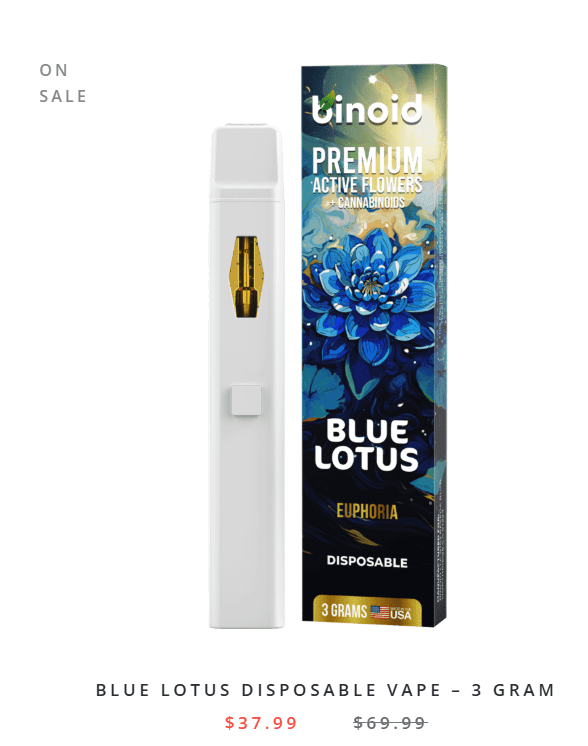
Contender #2: Blue Lotus
In stark and beautiful contrast to the scientific precision of HHC, our second contender, Blue Lotus, emerges from the deep, flowing currents of ancient history. Known formally as Nymphaea caerulea, this is not a product of laboratory hydrogenation but a sacred botanical that was revered as a divine gift by one of the world’s most powerful ancient civilizations. To the ancient Egyptians, the Blue Lotus was more than a simple water lily; it was a potent symbol of creation, a key to spiritual enlightenment, and an indispensable element in their most sacred religious rites.
Its ethereal beauty and enchanting fragrance were believed to be a direct connection to the gods. The experience it offers is not one of potent, recreational euphoria, but of a gentle and profound tranquility. It is a tool for quieting the mind, soothing the soul, and entering a state of serene, dream-like awareness. To engage with Blue Lotus is to partake in a tradition that has been held sacred for over three thousand years.
Blue Lotus, which is more accurately a type of water lily than a true lotus, derives its unique properties from a pair of primary alkaloids contained within its petals and stamens: apomorphine and nuciferine. These compounds interact with the human body in a way that is distinctly different from cannabinoids. Apomorphine is what is known as a non-selective dopamine agonist, which means that it activates dopamine receptors in the brain. This action is associated with its mood-lifting and calming effects. Nuciferine, on the other hand, is thought to have properties that contribute to a sense of tranquility and physical relaxation.
The synergistic dance between these two alkaloids is what produces the signature Blue Lotus experience: a gentle, dream-like psychoactivity that is both calming and subtly euphoric. It does not produce the intense perceptual shifts associated with THC, but rather fosters a state of peaceful, lucid awareness. Users often describe a pleasant sensation of warmth, a quieted mind free from racing thoughts, and a deeper connection to their immediate surroundings.
The story of Blue Lotus is an epic tale woven deeply into the golden tapestry of ancient Egyptian history. For thousands of years, this flower was far more than just a beautiful plant; it was a central pillar of Egyptian cosmology, religion, and social life. The flower’s unique behavior—opening its petals to the morning sun and closing them again at night to sink below the water—was seen as a powerful metaphor for the fundamental cycles of life, death, and rebirth. It was directly linked to the creation myth, wherein the sun god Ra was said to have first emerged from the heart of a blue lotus that blossomed from the primordial waters. This divine association made it a ubiquitous symbol in Egyptian art, seen in countless tomb paintings, hieroglyphic carvings, and on decorative objects.
Pharaohs and queens are depicted holding the flower to their noses, inhaling its sacred fragrance, which was believed to be a pathway to the divine. It was also famously infused into wine, creating a potent elixir that was consumed at festivals and religious ceremonies to induce states of blissful ecstasy and spiritual insight. With the decline of the Egyptian civilization, the esoteric knowledge of the Blue Lotus faded for centuries, only to be rediscovered in modern times by those captivated by its rich and mystical legacy.
The contemporary revival of Blue Lotus has seen it adapted into a diverse range of product forms, making this ancient botanical more accessible than ever before. While traditional preparations like teas and wine infusions are still popular among purists, modern manufacturing has introduced convenient and user-friendly formats that cater to a broader audience. These innovative products capture the essence of the flower, allowing individuals to explore its calming properties in ways that seamlessly integrate with a modern lifestyle.
This diversification has been instrumental in the flower’s resurgence, transforming it from a historical curiosity into a relevant and beloved part of the contemporary wellness and ethnobotanical landscape:
-
Dried Flower: This is the most authentic and versatile form, consisting of the dried whole flowers or just the petals and stamens. Users can brew the dried flower into a fragrant, calming tea, which is the most traditional method of consumption. It can also be ground and smoked or vaporized, either by itself or blended with other herbs, offering a more immediate onset of its gentle effects. This form appeals to those who enjoy a hands-on, ritualistic engagement with their botanicals.
-
Disposable Vapes: Leveraging the convenience of modern technology, Blue Lotus extract is now widely available in disposable vape pens. These sleek devices offer a smoke-free and highly discreet way to enjoy the flower’s properties. The extract is gently heated into an inhalable vapor, providing a rapid delivery of its calming alkaloids. These vapes are often enhanced with natural flavors and may be combined with other complementary botanical extracts.
-
Pre-Rolls: For individuals who enjoy the experience of smoking but prefer to skip the preparation, pre-rolls are the perfect solution. These are ready-made joints filled with ground Blue Lotus flower. Often, they are blended with other synergistic herbs like damiana, mugwort, or lavender to create a more complex aromatic profile and a more nuanced relaxing effect. They offer a simple, grab-and-go way to enjoy this ancient flower.
-
Gummies: One of the newest and most popular innovations, Blue Lotus gummies provide a tasty, precisely dosed, and smoke-free way to consume the flower’s extract. Each gummy contains a specific milligram amount of the active compounds, allowing for consistent and predictable experiences. Because the extract is absorbed through the digestive system, gummies have a slower onset but provide a longer-lasting period of gentle tranquility, making them ideal for sustained relaxation.
A fascinating development in the modern botanical market is the art of combining Blue Lotus extract with the diverse world of cannabinoids. This practice is rooted in the concept of synergy, where the unique properties of different plants can work together to create an experience that is greater than the sum of its parts. The serene, dopamine-related effects of Blue Lotus’s alkaloids can be skillfully paired with the cannabinoid system-targeting effects of compounds from the hemp plant. For example, blending Blue Lotus with non-psychoactive cannabinoids like CBD or CBN can create a powerful combination aimed at profound relaxation and physical ease.
When combined with a gentle psychoactive cannabinoid like Delta 8 THC, the result can be a uniquely blissful and dreamy state of mind that is both uplifting and deeply calming. For the more adventurous user, blends with potent cannabinoids like THCA Liquid Diamonds or THC-P aim to create a multi-layered and intensely profound journey, where the lucidity of Blue Lotus might serve as a grounding force for the powerful effects of the THC analogs. These thoughtful formulations are pushing the boundaries of customized botanical experiences.
The exploration of synergistic blends does not end with cannabinoids; Blue Lotus is also being thoughtfully combined with extracts from various mushrooms, another category of powerful natural agents. This trend is especially appealing to individuals interested in deepening their practices of meditation, introspection, and dream exploration. The most notable of these pairings is with extracts derived from the Amanita muscaria mushroom.
While this iconic mushroom has a complex history, modern extracts are often processed to harness its calming and dream-inducing properties, which are attributed to the compound muscimol. When the tranquil essence of Blue Lotus is combined with the oneirogenic (dream-enhancing) qualities of Amanita extract, the result is a potent blend designed for nighttime use. Users of these combinations often seek deep states of relaxation, heightened dream clarity and vividness, and a unique pathway for inner exploration, making this pairing a choice for the experienced ethnobotanical enthusiast.
The principle of creating harmonious blends extends to pairing Blue Lotus with a variety of other beneficial flowers and herbal extracts. Formulators often select botanicals with complementary properties or similar historical uses to craft a more holistic and well-rounded final product. This practice reflects a deep understanding of traditional herbalism. For instance, Blue Lotus is frequently combined with its botanical cousins, Pink Lotus (Nelumbo nucifera) or White Lotus (Nymphaea ambo).
These blends aim to offer a fuller spectrum of the calming and mood-lifting qualities associated with these revered water lilies. Another very common ingredient in Blue Lotus blends is Passionflower (Passiflora incarnata), an herb with a long history of use for promoting a sense of calm and relaxation. The addition of Passionflower can help to ground the ethereal, dreamy effects of the Blue Lotus, adding a deeper layer of physical tranquility that makes the blend exceptionally suitable for unwinding and achieving a state of peace.
In the United States, the legal framework surrounding Blue Lotus is remarkably simple and permissive, standing in stark contrast to the intricate and often contradictory laws governing cannabis and its derivatives. At the federal level, Blue Lotus (Nymphaea caerulea) is not classified as a controlled substance. This means that for the vast majority of the country, the plant, its extracts, and various consumer products containing it are perfectly legal to cultivate, possess, buy, and sell. This lack of federal prohibition has allowed a flourishing and accessible market to emerge, with Blue Lotus products readily available through online retailers, specialty herb stores, and local smoke shops.
There is, however, one very significant and well-known exception: the state of Louisiana. In Louisiana, the law specifically prohibits the cultivation, sale, and possession of Nymphaea caerulea if it is intended for human consumption. For residents outside of Louisiana, Blue Lotus can be enjoyed without legal fear, though it is always a prudent measure to be aware of any hyper-local ordinances that might exist.
Blue Lotus’s effects are celebrated for their subtlety, gentleness, and profoundly calming character, offering a peaceful sanctuary from the intensity of the modern world. The experience is not one of overwhelming intoxication but of a graceful transition into a more serene and peaceful state of being. It often begins with a soft wave of physical relaxation that seems to dissolve bodily tension, which is frequently described as a pleasant warmth or feeling of lightness.
The most prized effect, however, is its impact on the mind. Blue Lotus is known to quiet the incessant internal monologue, leading to a state of serene clarity and peaceful awareness that is highly conducive to mindfulness. While it is psychoactive, it is not intoxicating or disorienting. Instead, users report a mild and blissful euphoria, a dreamy and ethereal quality to their thoughts, and a gentle heightening of sensory perception. This unique profile makes it an ideal botanical ally for activities like meditation, yoga, creative writing, or simply quiet contemplation.
Pros & Cons
To fully appreciate the unique position Blue Lotus holds in the world of botanicals, one must consider both its celebrated strengths and its inherent limitations. Its allure is that of a soft-spoken sage, promising peace and introspection rather than a thunderous revelation. Like any botanical, it has a profile of positive attributes and potential downsides that every prospective user should consider. A balanced view of these pros and cons is the key to forming a healthy and realistic relationship with this sacred flower, ensuring that its use is both intentional and rewarding.
Pros:
-
Gentle and Manageable Effects: The foremost benefit of Blue Lotus lies in the subtle and non-overwhelming nature of its psychoactive experience. It ushers in a state of calm and mild euphoria without the intensity or potential for paranoia that can come with potent substances. This makes it an ideal choice for those new to psychoactive botanicals or for anyone seeking a gentle aid for relaxation that won’t be incapacitating.
-
Broadly Legal and Accessible: Outside of Louisiana, Blue Lotus enjoys a legal status that makes it incredibly easy to obtain. It is not federally regulated as a controlled substance, allowing it to be sold openly by a wide range of online and retail vendors. This accessibility removes the legal risks and complexities associated with navigating the patchwork of state-by-state cannabinoid laws.
-
Rich Historical and Spiritual Context: Consuming Blue Lotus is an opportunity to connect with a practice that is thousands of years old. Its profound significance in ancient Egyptian spirituality as a tool for divine communion and a symbol of creation lends a deep sense of meaning and reverence to the experience, transforming it from a simple act into a mindful ritual.
-
Excellent Aid for Meditation and Mindfulness: The flower’s renowned ability to quiet the mind’s internal chatter makes it an exceptional tool for deepening meditation, yoga, or any contemplative practice. By fostering a state of calm focus, it helps users to be more present and to explore their inner landscape with greater ease.
-
Potential for Enhanced Dream States: A unique and highly valued attribute of Blue Lotus is its reported effect on the dream state. Many users find that consuming it before sleep leads to dreams that are more colorful, memorable, and in some cases, lucid. This makes it a fascinating tool for those interested in exploring their subconscious mind.
-
Versatility of Consumption: Blue Lotus offers a wide array of consumption options to fit any preference. Whether one chooses the ancient ritual of brewing a tea, the modern convenience of a vape pen, or the simple pleasure of a gummy, there is a method of delivery that fits every lifestyle and comfort level.
-
Synergistic Blending Capabilities: Its gentle and complementary nature makes Blue Lotus an ideal ingredient in complex botanical formulations. It pairs harmoniously with other calming herbs like lavender and passionflower, as well as a wide array of cannabinoids, allowing for the creation of highly nuanced and targeted experiences.
-
Promotes Relaxation Without Impairment: While it induces a pleasant, dreamy state, Blue Lotus does not typically cause the cognitive impairment associated with many other substances. Users generally report feeling relaxed and peaceful yet clear-headed and fully capable of engaging with their surroundings, making it suitable for relaxation at any time of day.
Cons:
-
Subtlety May Underwhelm High-Tolerance Users: For individuals accustomed to the powerful, undeniable effects of high-potency THC, the extreme subtlety of Blue Lotus can be disappointing. Its gentle influence requires patience and mindfulness to fully appreciate, and those seeking a strong recreational high will likely find it to be far too mild.
-
Scarcity of Modern Scientific Research: Despite its long and storied history of human use, Blue Lotus is a subject that has been largely overlooked by modern clinical science. There is a lack of rigorous scientific data on its long-term safety, its precise mechanisms of action, and its potential interactions with pharmaceutical medications.
-
An Unregulated Market Creates Quality Concerns: The market for Blue Lotus products is not subject to any federal oversight or mandatory testing standards. This lack of regulation can lead to significant inconsistencies in the quality, purity, and potency of products from various suppliers. Consumers must take it upon themselves to find reputable, transparent brands that provide third-party lab tests.
-
Prohibited for Consumption in Louisiana: The specific ban on Blue Lotus for human consumption in the state of Louisiana is a major drawback for anyone living there. This serves as an important reminder that even for federally unscheduled botanicals, state and local laws can create unexpected prohibitions.
How to Go About Choosing Which Option
The choice between HHC flower and Blue Lotus is a defining one, asking the user to clearly state their intention before embarking on their journey. It is a decision between two entirely different worlds of experience, one crafted by modern science for a reliable psychoactive effect, the other preserved by history for its gentle spiritual utility. There is little overlap in their purpose. One is a tool for recreation and potent euphoria, while the other is an aid for meditation and serene introspection.
To choose wisely is to first look inward and determine what you are seeking: a vibrant, blissful high to color your world, or a quiet, calming whisper to bring you closer to your inner self? Your answer to this question will make the choice clear.
|
Feature |
HHC Flower |
Blue Lotus |
|---|---|---|
|
Nature of Product |
Infused Product (Hemp flower coated with HHC distillate) |
Natural Product (Dried petals and flowers of the plant) |
|
Primary Active Compounds |
Hexahydrocannabinol (HHC), a cannabinoid |
Apomorphine & Nuciferine (alkaloids) |
|
Typical Experience |
Potent, euphoric, blissful, balanced head/body high similar to THC |
Gentle, calming, dreamy, lucid, tranquil, non-intoxicating |
|
Key Feature |
High chemical stability (long shelf life); a balanced, classic “high” |
Deep historical/spiritual significance; excellent for meditation |
|
Legal Status (U.S.) |
Tenuous; Federally compliant as hemp, but banned in many states |
Federally legal and unregulated in most states, except Louisiana |
|
Best Suited For… |
Recreational use, social settings, users seeking a legal THC alternative |
Meditation, mindfulness, dream enhancement, gentle relaxation, spiritual practice |
Ultimately, your choice should be a direct reflection of your desired destination, so…
-
Choose HHC Flower if: You are seeking a psychoactive experience that is potent, reliable, and very similar to traditional Delta 9 THC. It is the perfect option if you enjoy a classic, euphoric “high” with a good balance of mental stimulation and physical relaxation. If you appreciate the long shelf life and consistent effects that come from a scientifically stabilized molecule and want a legal way to access a familiar cannabis journey, HHC flower is an excellent and popular choice. It’s built for blissful recreation and enjoyment.
-
Choose Blue Lotus if: Your goal is gentle tranquility and a deeper connection with your inner self. It is the superior choice if you are looking for a botanical aid to enhance meditation, quiet a busy mind, or explore the rich tapestry of your dreams. If you are sensitive to THC or simply wish to avoid an intoxicating high in favor of a more subtle, serene, and spiritually-inflected experience, Blue Lotus will meet your needs perfectly. It is a tool for peace, not for potency.
The Engineered Echo or the Ancient Whisper
In the end, the decision between HHC Flower and Blue Lotus is a choice between two voices calling from two different worlds. One is the clear, engineered echo of a familiar cannabis high, refined by science for stability and a consistent, blissful performance. The other is the ancient, subtle whisper of a sacred tradition, offering a timeless path to a quiet and serene state of mind. Neither is better, but each is a master of its own domain. By understanding your own intentions, you can choose the voice that speaks to your present need, whether it is the call to vibrant euphoria or the invitation to peaceful contemplation.
To Buy HHC Flower Click Here
Recommended products
-
THCA Flower – Indoor Exotics – Gold Line
$37.99$69.99 -
THCA Flower – Mystery Reserve
$41.99$79.99 -
THCA Flower – Platinum Line
$49.99$79.99 -
THCA Smalls
$149.99$256.99

